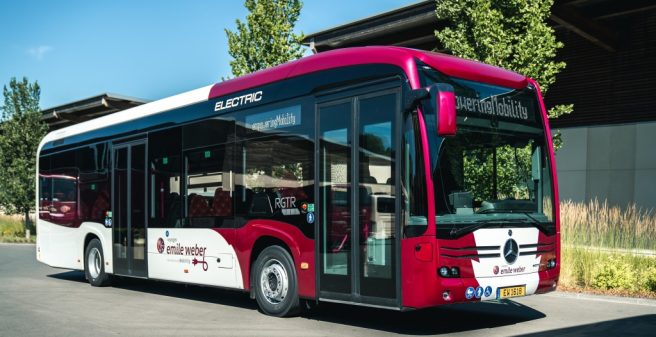
Exactly one year ago, Mercedes Benz presented its’ electric eCitaro to the world. After an intensive testing phase, Mercedes Benz has achieved several important orders already. So far, five customers in Germany have ordered a total of 113 eCitaros. Additionally, Mercedes is now delivering 20 eCitaros to Canach in Luxembourg, Trollasen in Norway and Ystad in Sweden. Those order bring the order book to 133 eCitaros. An exclusive overview:
-
Rhein-Neckar-Verkehr GmbH (RNV): At the end of 2018, the first three eCitaros were delivered to the RNV and since January 2019 the vehicles in Heidelberg entered service on line 20. On April 28, a further three eCitaros started operating in Mannheim on the lines 66 and 67.
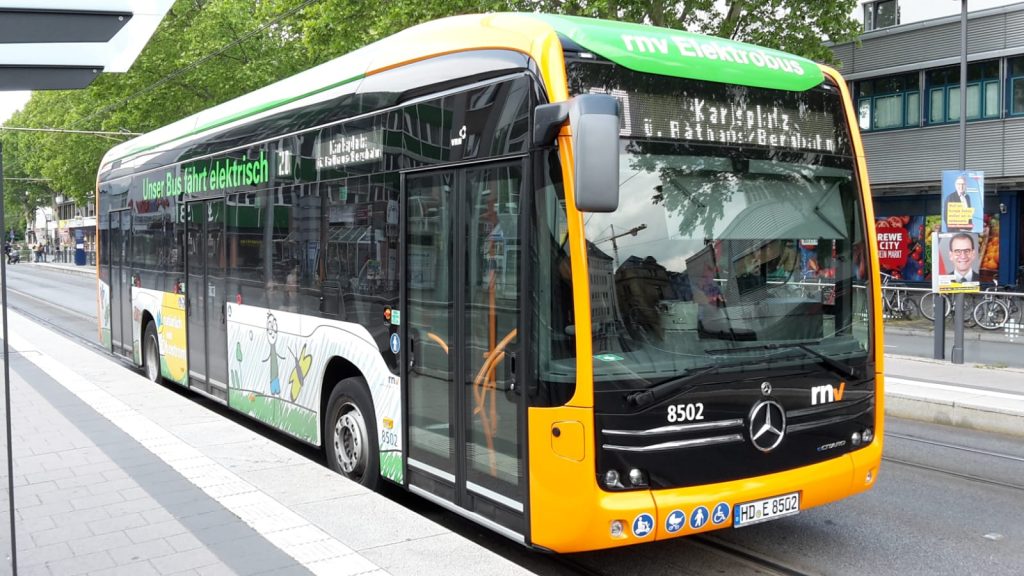
Hamburger Hochbahn AG (HHA): 20 eCitaros were ordered in November 2018. The buses have a battery capacity of 243 kWh. The batteries are re-charged by plug-in charging at the depot.
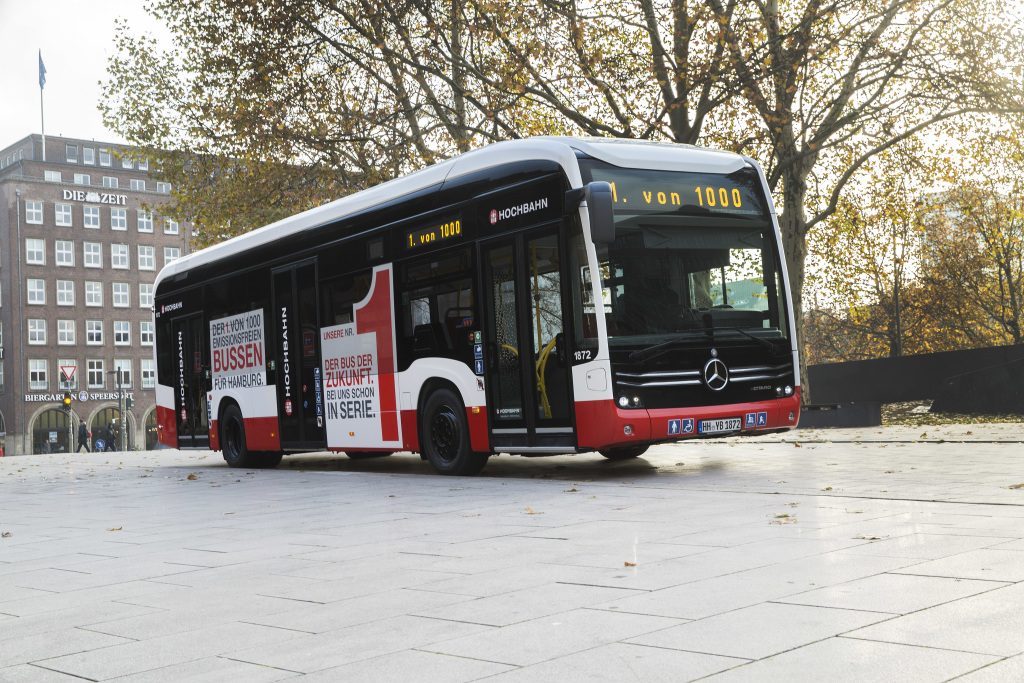
- Berliner Verkehrsbetriebe BVG: 15 eCitaros. The first eCitaro was presented on March 27, 2019 in Berlin. Operation already started on several city lines such as line 142. The official launch of the fleet is planned for August 2019 on a newly designed line 300 between Schlesisches Tor and Philharmonie. The 15 eCitaros for Berlin are equipped with ten battery modules and a total capacity of 243 kWh and allow a range of around 150 kilometers, even under difficult conditions. The batteries of the 15 eCitaro for the BVG are charged by plug-in at the depot.
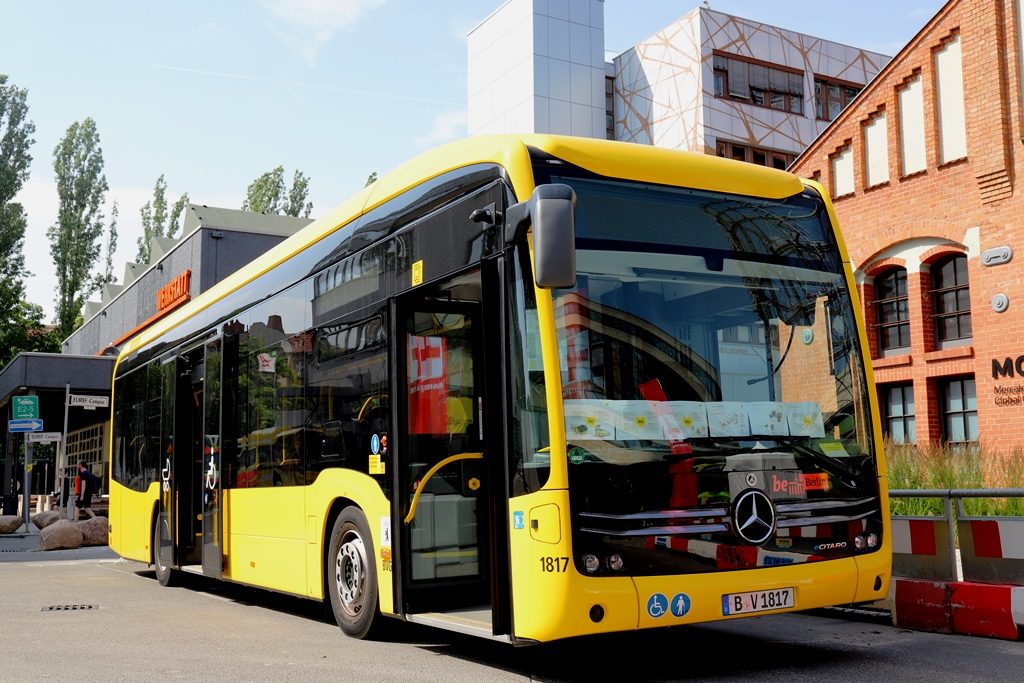
- Verkehrsbetriebe Hamburg-Holstein (VHH): 16 eCitaros were ordered in 2019. VHH is the first operator to receive the new maximum equipment with twelve battery packs and a total capacity of 292 kWh. This results in a long range even under difficult conditions in midsummer and winter of around 170 kilometers with the SORT2 drive cycle without recharge. Under ideal conditions, the range can be as high as 280 kilometers.
-
ESWE Verkehrsgesellschaft mbH (short ESWE Verkehr) Wiesbaden: 56 eCitaros. The first 15 eCitaro for Wiesbaden will receive lithium-ion batteries of the current generation with a total capacity of 292 kWh. The other 41 eCitaro will be equipped with solid state batteries. Seven battery packs with a battery capacity of 441 kWh allow more than 200 km according to SORT 2 under particularly severe boundary conditions of pure electric heating in winter. All 56 buses are charged by plug-in at the depot.
Voyages Emile Weber, Luxembourg: Voyages Emile Weber has chosen nine two-door eCitaro buses. These are equipped with the maximum number of twelve high-voltage battery packs delivering a total capacity of 292 kWh. The upholstery of the seats, the grab bars and the side-wall panelling in needle felt are designed in red. The floor covering has a homely wooden look.
Norgesbuss, Trollasen, Norway: Norgesbuss group with a total of more than 700 buses, is one of Norway’s leading bus operators. The company has ordered six eCitaro buses which will be operating in the capital, Oslo. Ten high-voltage battery packs with a capacity of 243 kWh provide the electricity for the three-door buses. There are also pantographs on the roof for intermediary charging to extend the vehicle’s range. In Scandinavia, an alcohol tester in the driver’s area is part of the equipment. For operation during winter, the floor areas near to the entrances are heated.
Bergkvarabuss, Ystad, Sweden: Bergkvarabussis the pioneer for the eCitaro in Sweden. In the town of Ystad on the south coast, five eCitaro buses are going into operation. The two-door rigid buses are equipped with the full complement of twelve high-voltage battery packs with a total capacity of 292 kWh. The extensive safety and interior equipment of the vehicles includes an alcohol tester for the driver, folding ramps for both doors, a passenger compartment signal system with visual and tactile response, ambient lighting and upholstered single seats with high backrests and leather headrests. With over 1000 buses, Bergkvarabuss is one of the largest bus companies in Europe.
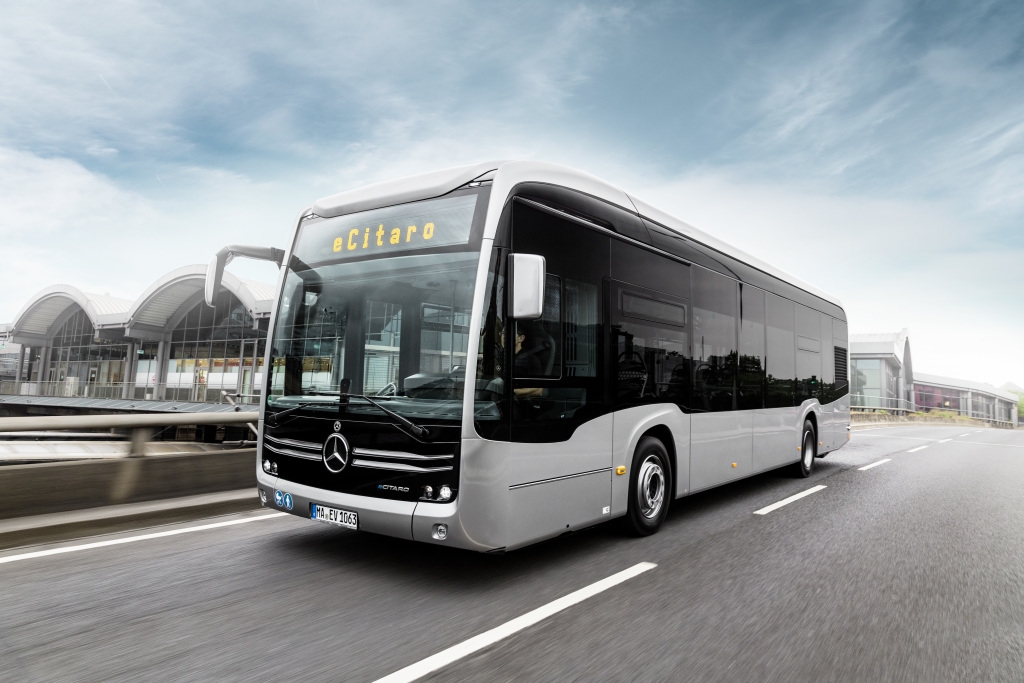
The Mercedes-Benz eCitaro with all-electric drive is fitted with two electric hub motors with 2 x 125 kW, 2 x 485 Nm I Photo: Mercedes Benz
Although the general architecture of the eCitaro resembles the its’ Diesel predecessor, the eCitaro is a completely new developed electric bus. The powertrain of the new eCitaro is based on the proven and optimised electric portal axle ZF AVE 130 with electric motors at the wheel hubs. The peak output of the motors is 2 x 125 kW, while torque is 2 x 485 Nm. It is an inherent feature of such motors that this is fully available right from the start, ensuring appropriate dynamic performance even with a full complement of passengers. Lithium-ion batteries with a total capacity of up to about 243 kWh provide the power. They are modular in design: the batteries are split between up to ten modules, each supplying around 25 kWh. As well as two battery modules on the vehicle roof, the standard equipment includes four modules in the rear of the bus. In the eCitaro, these are taking the place of today’s powertrain combination of combustion engine and transmission. Depending upon customer requirements, another two or four battery modules are mounted on the roof of the eCitaro. Each battery module is made up of 15 cell modules as well as a control unit for monitoring purposes and as a means of balancing the charge of the battery cells. Each separate cell module houses twelve battery cells. Mercedes-Benz uses easily manageable prismatic cells with a capacity of 37 Ah each. With a minimum of six and up to a maximum of ten possible battery modules, transport operators can adapt their usage and charging strategy very precisely to individual needs. Opting for the largest number maximises the range of the buses, while a smaller number reduces the weight as well as the cost of purchase and allows more space for passengers – but potentially makes time-consuming opportunity charging necessary.
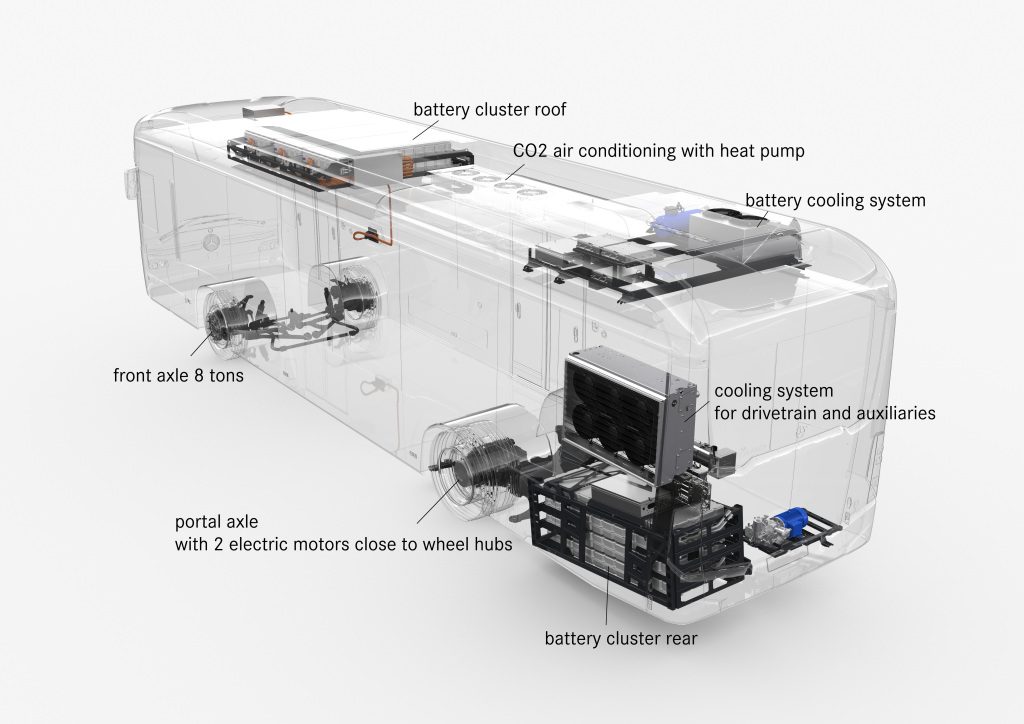
Sources: Mercedes Benz/ Daimler Buses
30.07.2019
